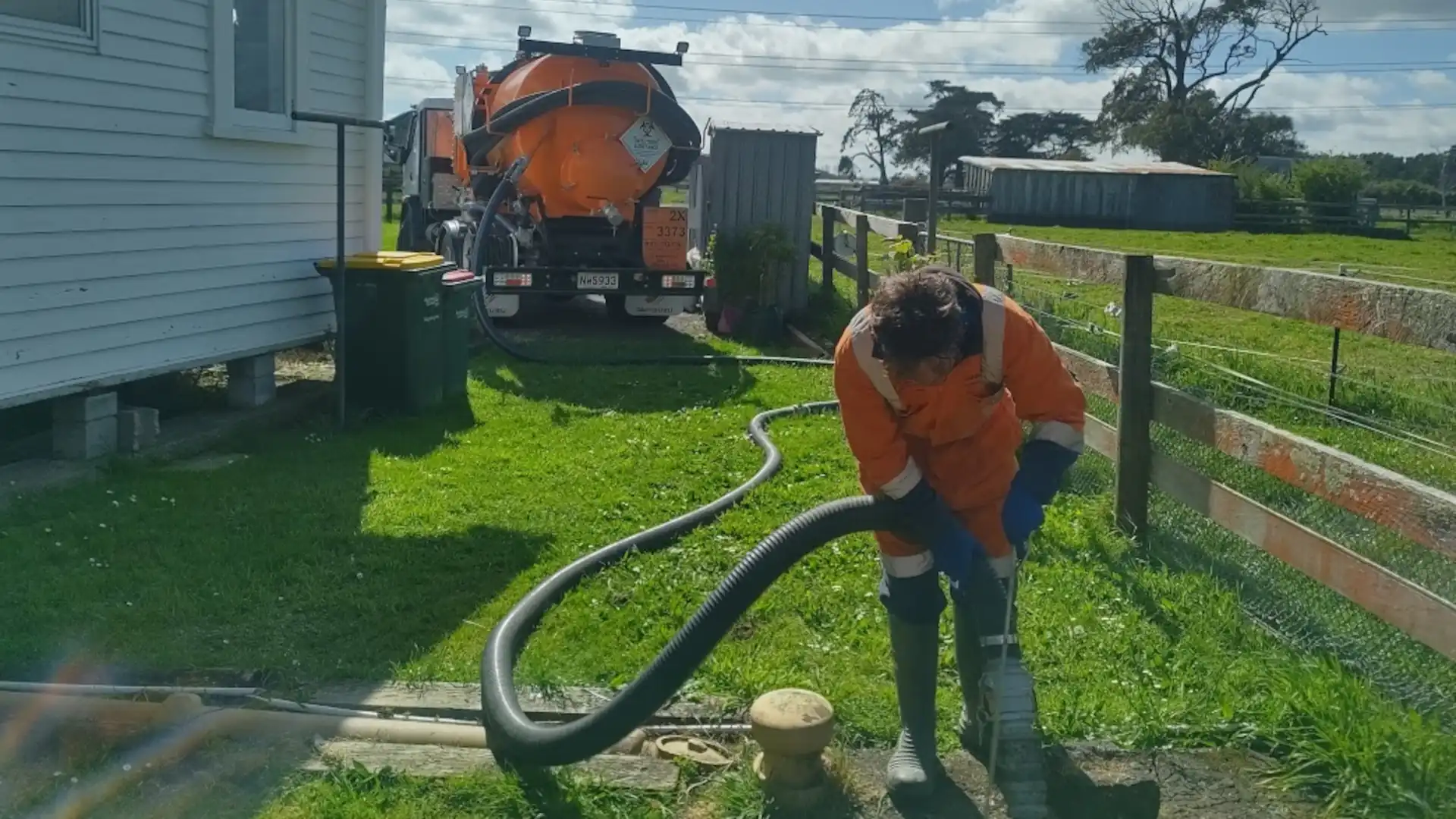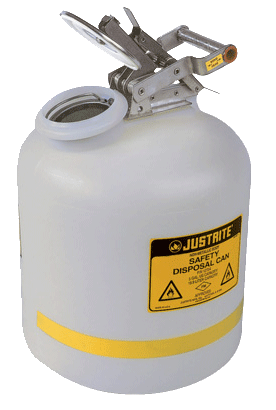Comprehensive Liquid Waste Disposal: Solutions for Residences and Organizations
Wiki Article
Just How Fluid Garbage Disposal Works: An In-depth Summary of Methods and Technologies Used

Overview of Fluid Waste Types
The intricacy of fluid waste kinds necessitates an extensive understanding of their characteristics and implications for disposal. Liquid waste can broadly be categorized into several types, including industrial, municipal, farming, and harmful waste. Each group shows distinctive properties, needing details administration strategies to mitigate environmental and health threats.
Industrial fluid waste stems from producing processes and frequently includes an array of pollutants, such as heavy steels, solvents, and natural compounds. Community fluid waste, primarily comprising wastewater from households and commercial establishments, has raw material, nutrients, and microorganisms (industrial wastewater treatment). Agricultural fluid waste, including overflow from farms, may have fertilizers, chemicals, and animal waste, presenting threats to water quality and environments
Unsafe fluid waste is identified by its toxicity, sensitivity, or possible to trigger injury. This group includes substances like acids, bases, and specific chemicals that require stringent handling and disposal procedures. Recognizing these diverse fluid waste kinds is important for establishing efficient disposal techniques and making certain compliance with environmental laws. Proper category and characterization are necessary for carrying out ideal therapy methods and lessening the adverse influence on public health and the atmosphere.
Physical Therapy Methods

Screening is the first action, where bigger fragments and particles are removed from the liquid waste making use of displays or grates. This procedure protects downstream devices from damage and makes certain smoother procedure. Adhering to screening, sedimentation makes use of gravitational pressure to separate solids from fluids. In sedimentation storage tanks, larger bits resolve near the bottom, creating a sludge layer, while the cleared up liquid can be more treated.
Filtering is one more necessary approach that entails passing the liquid with permeable materials, such as sand or membranes, to record smaller sized bits. This step enhances the high quality of the fluid, making it suitable for succeeding treatment procedures.

Chemical Treatment Methods
Chemical therapy methods are necessary for properly taking care of liquid waste, particularly in attending to dissolved and colloidal contaminants that physical approaches might not appropriately eliminate. These strategies use numerous chemical agents to counteract, precipitate, or change unsafe materials into much less harmful types.One usual technique is coagulation and flocculation, where chemicals such as alum or ferric chloride are contributed to advertise the gathering of suspended particles. This procedure enhances sedimentation, enabling simpler removal of the resulting sludge. Additionally, oxidation processes, utilizing representatives like chlorine or ozone, are employed to damage down complicated natural compounds and pathogens, making the waste much safer for discharge or further treatment.
Neutralization is an additional essential strategy, which adjusts the pH of acidic or alkaline waste streams to neutral levels, preventing prospective damage to downstream systems and the atmosphere. Furthermore, advanced oxidation procedures (AOPs) use mixes of oxidants and ultraviolet light to weaken persistent toxins, achieving a greater level of treatment efficiency.
Biological Treatment Processes
Organic treatment processes play a crucial function in the administration of liquid waste by utilizing bacteria to decay organic issue and lower impurity degrees. industrial wastewater treatment These procedures can be extensively categorized into cardiovascular and anaerobic therapies, each employing specific microbial areas to attain reliable waste degradation.Aerobic therapy entails the usage of oxygen to promote the failure of natural materials by microorganisms. This procedure is commonly carried out in triggered sludge systems, where oygenation containers provide a helpful atmosphere for microbial development, causing the oxidation of natural toxins. The resultant biomass can be separated from dealt with effluent with sedimentation.
On the other hand, anaerobic therapy occurs in the lack of oxygen, relying on various germs to break down natural matter. This technique is specifically helpful for high-strength waste, as it creates biogas, a renewable power source, while minimizing sludge manufacturing. Technologies such as anaerobic digesters are often used in commercial and community applications.
Both cardio and anaerobic organic treatments not only minimize the environmental impact of liquid waste yet also assist in resource recuperation, making them important components of sustainable waste monitoring strategies. Their efficiency, versatility, and efficiency support their widespread execution throughout different markets.
Emerging Technologies in Disposal
Innovative strategies to fluid garbage disposal are quickly evolving, driven by developments in modern technology and a boosting focus on sustainability. Among these emerging innovations, membrane bioreactors (MBRs) have actually gained grip for their capability to combine organic treatment with membrane layer filtering, resulting in top quality effluent that can be recycled in different applications. MBRs make it possible for smaller impacts and much more reliable procedures compared to standard systems.Another appealing growth is the usage of anaerobic digestion integrated with nutrient recovery technologies, which not only deals with fluid waste but likewise produces biogas and recoups valuable nutrients like nitrogen and phosphorus. This double benefit improves resource efficiency and minimizes ecological influence.
Additionally, advanced oxidation processes (AOPs) are being embraced for the deterioration of complex organic toxins. These methods make use of powerful oxidants and stimulants to break down pollutants at the molecular degree, using a highly reliable service for difficult waste streams.
In addition, the assimilation of fabricated knowledge and machine understanding in waste monitoring systems is enhancing operational effectiveness and anticipating maintenance, resulting in reduced prices and enhanced environmental conformity. These innovations show a significant change towards more lasting and effective fluid waste disposal techniques.
Conclusion
Finally, efficient liquid waste disposal demands an extensive understanding of numerous strategies and innovations. The assimilation of physical, chemical, and organic treatment techniques guarantees the effective management of varied waste kinds. Furthermore, the appearance of cutting-edge innovations boosts treatment effectiveness and advertises sustainability in waste management techniques. By continuously advancing these approaches, it comes to be possible to deal with the growing challenges connected with fluid waste, ultimately adding to environmental defense and source healing.Fluid waste disposal is a crucial aspect of ecological management, calling for a thorough understanding of numerous methods and technologies customized to different waste types. Fluid waste can extensively be classified into a number of types, consisting of industrial, municipal, agricultural, and unsafe waste. Agricultural liquid waste, consisting of runoff from ranches, might consist of fertilizers, chemicals, and animal waste, posturing risks to water top quality and ecological communities.
Numerous physical treatment techniques play a crucial function in taking care of liquid waste properly - industrial wastewater treatment.In final thought, effective liquid waste disposal demands a comprehensive understanding of various techniques and modern technologies
Report this wiki page